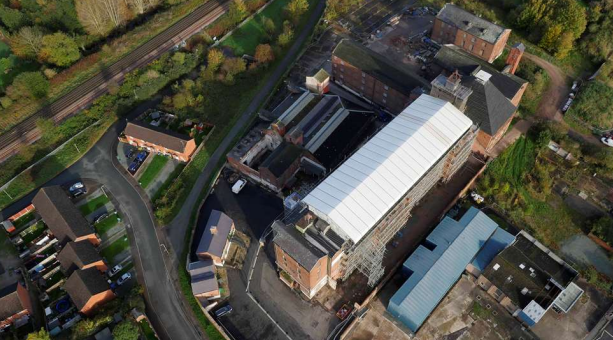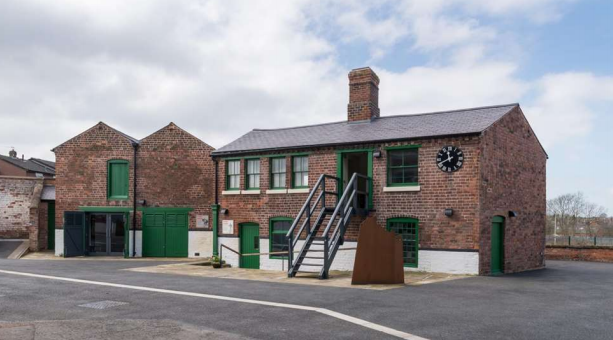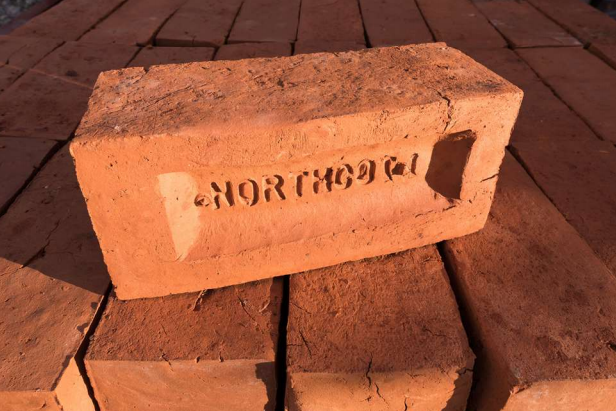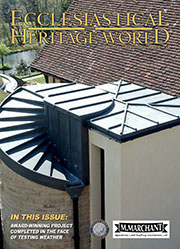Restoration work at Shrewsbury's historic Flaxmill Maltings

 Historic England took leadership of the Shrewsbury Flaxmill Maltings project in March 2014. The Department for Communities and Local Government awarded £1,169,000 of funding through the European Regional Development Fund (ERDF) towards a Stage One, £2.5m, project to kick-start regeneration. Historic England provided the balance of the funds.
Historic England took leadership of the Shrewsbury Flaxmill Maltings project in March 2014. The Department for Communities and Local Government awarded £1,169,000 of funding through the European Regional Development Fund (ERDF) towards a Stage One, £2.5m, project to kick-start regeneration. Historic England provided the balance of the funds.
Completed work - Stage 1:
The Oice and Stables have been converted for use by the Friends of the Flaxmill Maltings as an interactive visitor centre and education facility The 1950's grain silo has been demolished, providing further external space for cultural, interpretation and public use. This added to work previously carried out by Shropshire Council to clear derelict modern buildings from the site.
Current work Stage 2 = £28.4m (including £1m from HE fundraising)
 A grant of £20.7 million from the Heritage Lottery Fund (HLF) - combined with funding from Historic England, Shropshire Council and the Friends of the Flaxmill Maltings - is enabling the Stage 2 project to progress. We're embarking on a fundraising campaign to secure the remainder of the funds.
A grant of £20.7 million from the Heritage Lottery Fund (HLF) - combined with funding from Historic England, Shropshire Council and the Friends of the Flaxmill Maltings - is enabling the Stage 2 project to progress. We're embarking on a fundraising campaign to secure the remainder of the funds.
For further information about becoming a supporter, please see the Historic England fundraising page.
The partnership is now concentrating on restoring the 1797 Grade I listed Main Mill and Grade II listed Kiln from 1898. The scaolding that currently adorns the Main Mill hides a hive of activity. The two hundred year old cast iron columns are being relieved of some of their extraordinary duties, and extra columns being added to take some of the load. The roof tiles of the unusual ridge and furrow roof are being replaced with Welsh slate, and large cast iron gutters reforged locally and replaced. New roosts are being installed beneath all this to host the incumbent bat population. Over 30,000 new handmade oversized bricks are being made to repair the building's walls.
In fact, the bricks are a really interesting part of the history of the mill which was built shortly after a tax on bricks was introduced, to try to raise money for the wars taking place over in the American colonies. To try to get around this, larger bricks were manufactured so that fewer were needed and therefore less tax needed to be paid.
Historic England's Tamsin Foster explained: "Keen to ensure that we match up any new bricks needed as closely as possible, we have commissioned Northcot Brick to supply our ‘great bricks’, which are all being hand thrown. Northcot have been fantastic, even getting involved in our heritage skills programme by running a brick making workshop for some local college students."
Nick Hill, Shrewsbury Flaxmill Maltings Project Manager for Historic England commented,
“With buildings of such historic significance as these, Historic England is keen to ensure that the restoration is done as sensitively and authentically as possible, whilst also safeguarding them to be able to withstand whatever nature and future users throw at it during its next phase of life.
Where it is not possible to restore original features, due to deterioration over time or extensive damage from the period when the site was derelict, we have sought out reputable suppliers who can provide high quality materials which won’t look out of place on the two hundred year old Flaxmill Maltings buildings.
“Our suppliers include Northcot Brick, who can not only provide the right size of bricks, which are larger than standard bricks, but have also been able to match the new bricks to the original colour. We’ve sourced roof slates for the Main Mill from one of the only remaining suppliers of original Welsh slate from Penrhyn Quarry, which covered the Mill roof when it was first built. The roof has unusual original valley gutters of cast iron, and new matching sections of these are being made by the Barr and Grosvenor Foundry.
“Through these efforts, and those of our suppliers, we’re confident that when complete, the Shrewsbury Flaxmill Maltings will be exemplary and a model of good practice in terms of the approach taken to restore industrial buildings and bring them back into use.”
 The work in numbers:
The work in numbers:
- 30,000 new handmade bricks being used
- 6 new load bearing columns installed (on the ground floor)
- 105 windows reopened within the Main Mill
- 1 record-breaking building back in use
When complete Stage 2 of the project will:
- Remove the Main Mill from the Heritage at Risk Register
- Create interpretation and learning space on the ground floor, along with a café, to be managed by the Friends of the Flaxmill Maltings
- Create four floors of space available for commercial use
- Create circulation space within the Kiln for the commercial tenants and provide access for tour visitors to the restored Jubilee Tower
- Provide a landscaped car park with improved accessibility across the site
 Historic England achieved full planning permission and listed building consent for the proposed designs in November 2016 and work began on site in June 2017. The Stage 2 project is due to complete in 2021.
Historic England achieved full planning permission and listed building consent for the proposed designs in November 2016 and work began on site in June 2017. The Stage 2 project is due to complete in 2021.
Future work
Historic England is also reviewing the current masterplan for the wider Shrewsbury Flaxmill Maltings site. This includes brownfield land for residential dwellings, the potential conversion of other historic buildings and future commercial opportunities.
A full prospectus will be provided outlining the commercial opportunity in due course, but if you're interested in occupying this unique and internationally important site please contact This email address is being protected from spambots. You need JavaScript enabled to view it.
To find out more about this wonderful project visit https://historicengland.org.uk/get-involved/visit/shrewsbury-flax-mill













